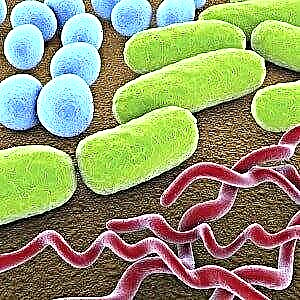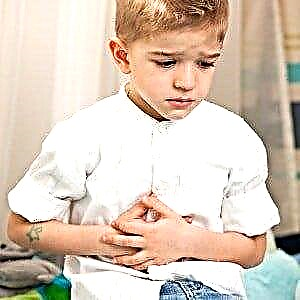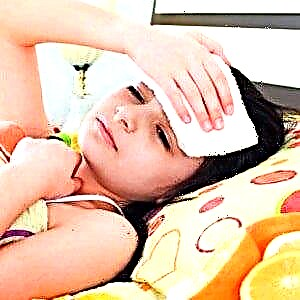Travel is an important aspect of helping to break down the monotony in a person's life. In today's world, the mad rush and pressure of work leads to fatigue and exhaustion. Travel provides space to relax and return home with a renewed look and renewed vigor. However, the pleasure of travel can sometimes be clouded by various health problems.
What is traveler's disease?
Diarrhea is the most common medical complaint among travelers.
Traveler's diarrhea is a condition that develops during or shortly after rest. Diarrhea appears as loose or watery stools, usually at least three times in 24 hours. In many cases, it causes mild illness and symptoms for 3 to 4 days. No specific treatment is usually required, but it is important to drink plenty of water to avoid a lack of fluid in the body (dehydration).
It should be noted that with diarrhea, the traveler is not worried about bloody stools, severe abdominal pain or high fever. These symptoms are suggestive of more serious conditions and require medical attention.
Traveler's diarrhea is caused by eating food or drinking water that contains certain germs or their poisons (toxins).
Types of microbes that can cause this condition
1. Bacteria. The most common pathogens that cause traveler's diarrhea.
Common types of bacteria are:
 colibacillus;
colibacillus;- campylobacter;
- salmonella;
- shigella (causative agent of dysentery).
2. Viruses. Noroviruses and rotaviruses are especially common.
3. Parasites. These are less common reasons.
Giardia, coccidia and amoeba are examples of parasites that can cause traveler's diarrhea.
Often the exact cause of a traveler's diarrhea is not found. Research has shown that many do not have any specific microbe despite having a gut disorder.
Traveler's diarrhea most often affects people who travel from a developed country like the UK or Germany to a less developed country where sanitation and hygiene measures may not be of the same standard. This may affect 2 - 6 out of 10 travelers.
There are different risks depending on where you are going.
- high risk areas: South and South-East Asia, Central America, West and North Africa, South America, East Africa;
- areas of medium risk: Russia, China, Caribbean, Southern Europe, South Africa;
- low risk areas: North America, Western Europe, Australia and New Zealand.
Occasionally, outbreaks of diarrhea can occur in travelers staying in the same hotel or, for example, in those on a cruise ship.
Symptoms
By definition, diarrhea is the main symptom. The stool is loose or watery.
Other symptoms may include:
 stitching pains in the abdomen;
stitching pains in the abdomen;- nausea;
- vomiting;
- temperature rise.
Symptoms are usually mild in most children and last 3 to 4 days, but longer symptoms can occur. Symptoms are more severe in very young children and in children with other health problems whose immune systems do not work as well as usual. For example, children with HIV infection, chemotherapy patients, long-term steroid therapy.
Despite the fact that the symptoms are usually quite mild, they often require an interruption or re-routing of travel.
How to identify the disease?
Traveler's diarrhea is usually diagnosed based on typical symptoms. As mentioned above, most children have mild symptoms and do not need to seek medical attention. However, sometimes medical advice is required.
If you see your doctor, he or she will offer to test a sample of baby stool. This test is sent to the laboratory to look for any microbes that are causing the symptoms. Sometimes blood tests or other tests may be needed if the child has more serious symptoms or any complications.
When to see a doctor?
As mentioned above, most children with traveler's diarrhea have relatively mild symptoms, and parents can control them on their own by making sure the child drinks plenty of fluids.
But you should seek medical attention if any of the following occurs, or if other symptoms occur that bother you:
 if the child has a high fever;
if the child has a high fever;- if there is blood in the child's stool;
- if it is difficult for a child to drink enough fluids due to severe symptoms - frequent or very watery stools or repeated vomiting;
- if diarrhea lasts more than 3 to 4 days;
- if you started antibiotic therapy on your own, and the diarrhea does not disappear within three days after starting treatment;
- if the child has other serious health problems such as diabetes, inflammatory bowel disease, kidney disease;
- if the child has a weakened immune system, for example, during treatment with chemotherapy, long-term steroid treatment, HIV infection;
- if the injured child is under 6 months old.
How do you know if your child is dehydrated?
Signs of dehydration in children:
 scanty urination;
scanty urination;- dry mouth;
- dry tongue and lips;
- few tears when crying;
- sunken eyes;
- irritability;
- lack of energy (lethargy).
Symptoms of severe dehydration in children:
- drowsiness;
- pale skin;
- cold hands or feet;
- lack of urination;
- fast (but often shallow) breathing.
Severe dehydration is a critical condition and immediate medical attention is needed.
Dehydration is more common:
- in infants under one year old (and especially if children are under 6 months old). Due to the fact that babies do not need to lose a lot of fluids in order to enter a critical condition;
- in infants of the first year of life who were of low birth weight and did not gain their due weight;
- a breastfed baby who has stopped breastfeeding while sick
- any child who drinks little when they have a bowel infection (gastroenteritis);
- any child with severe diarrhea and vomiting.
Treating traveler's diarrhea in children

- You should encourage your child to drink plenty of fluids. The goal is to prevent fluid deficiency in the body (dehydration). Fluid lost from vomiting and / or diarrhea must be replaced.
- Your child should continue to eat normally.
Avoid fruit juices or sodas as they can make your diarrhea worse.
- Babies under 6 months of age are at increased risk of dehydration. You should seek medical attention if they develop severe diarrhea. Breast milk or formula feeding is encouraged. You may find that your baby's demand for milk increases. You should give extra fluids (water or rehydration drinks) between feeds.
- It is wise to consider purchasing an oral rehydration sachet for children before travel. They provide the ideal balance of water, salt and sugar in children and are used to replenish fluid.
Remember that you need safe water to prepare the solution.
- If the child has vomited, wait 5 to 10 minutes and then start giving drinks again, but more slowly (for example, a spoon every 2 to 3 minutes). Using a syringe will help young children who cannot sip.
- Sometimes, if a child is dehydrated, hospitalization is required. Hospital treatment usually involves giving a rehydration solution through a special tube called a nasogastric tube. This tube goes through the baby's nose, down the throat and into the stomach. An alternative method is with fluids injected directly into a vein.
- Treating any dehydration is a top priority. However, if the child is not dehydrated (in most cases) or the fluid deficit is quickly restored, encourage him to eat well. Don't let a child with infectious diarrhea go hungry. Continue breastfeeding or formula feeding. This usually comes in addition to rehydration drinks. Offer some food from time to time for older children. But if the child does not want to eat, then this is normal. Fluid is important, and food can wait until appetite returns.
- Loperamide is not recommended for children with diarrhea. There is concern that Loperamide may cause intestinal obstruction in children with diarrhea.
Racecadotril is an option for use in rehydration therapy. It can be used for babies over 3 months old.
Most children with traveler's diarrhea do not need antibiotic treatment. However, antibiotic therapy may be recommended on an ad hoc basis if a specific bacterium has been identified after analysis of a stool sample.
Complications
For most children, the illness goes away easily, and complications from traveler's diarrhea are rare.
However, in severe cases of the disease, they are still present, and it is important for parents to know about this.
1. Salt (electrolyte) imbalance and fluid deficiency in the body.
 The most common complication. This happens when the salts and water that are lost through loose stools and vomit are not replaced by drinking fluids. If the child manages to drink plenty of fluids, then dehydration is unlikely to occur or will be mild and the body will recover soon.
The most common complication. This happens when the salts and water that are lost through loose stools and vomit are not replaced by drinking fluids. If the child manages to drink plenty of fluids, then dehydration is unlikely to occur or will be mild and the body will recover soon.
Severe dehydration will lead to a decrease in blood pressure. This entails a decrease in blood flow to vital organs. If dehydration is not treated, the kidneys will be damaged.
2. Reactive complications.
It happens that other organs or systems of the child's body may react to an infection in the intestines. This can cause symptoms such as joint inflammation (arthritis), skin and eye inflammation. Reactive complications are more common in situations where the traveler's diarrhea was triggered by a virus.
3. Spread of infection to other parts of the child's body, such as bones, joints, or meninges that surround the brain and spinal cord. This is rare. If this happens, it is more likely that the diarrhea is caused by a salmonella infection.
4. Persistent diarrheal syndromes rarely develop.
- irritable bowel syndrome is sometimes triggered by an attack of traveller's diarrhea.
- lactose intolerance sometimes occurs temporarily after the traveler's diarrhea. It is known as secondary, or acquired, lactose intolerance. The intestinal mucosa can be damaged by an episode of diarrhea. This results in a lack of an enzyme called lactase, which is needed to help the body digest milk sugar lactose. Lactose intolerance leads to bloating, pain, gas, and watery stools after drinking milk. The condition improves when the infection ends and the intestinal lining heals.
5. Another potential complication is hemolytic uremic syndrome. It is rare and is usually associated with traveler's diarrhea due to a particular type of E. coli infection. It is a serious medical condition that is associated with anemia, low platelet counts, and kidney damage. If the pathology is recognized and treated, most children will recover.
6... Guillain-Barré syndrome is rarely caused by campylobacter infection - one of the causes of traveler's diarrhea. It is a condition that affects nerves throughout the body and in the limbs, causing weakness and problems with the sensitivity of the skin.
Forecast
As mentioned above, symptoms are usually short-lived and most children recover completely after a few days. However, some children with traveler's diarrhea develop persistent (chronic) diarrhea that may last for one month or more. A second episode of the illness during the same trip is also possible.
Precautionary measures
1. Be attentive to what the child drinks and eats.
When moving to areas with poor sanitation, you should avoid food or drinking water that may contain germs or their poisons.
Avoid:
 tap water;
tap water;- fruit juices sold by street vendors;
- Ice cream (unless made with safe water)
- ice cubes;
- shellfish (eg mussels, oysters) and raw seafood;
- eggs;
- salads;
- raw or undercooked meat;
- fruits that are already peeled or have damaged skin;
- food containing raw eggs such as mayonnaise or sauces;
- unpasteurized milk.
It is believed that bottled water and carbonated drinks that are in sealed bottles or cans, tea, coffee, are safe to drink. Food must be thoroughly cooked and hot when served. You should also be alert to food from markets, street vendors, or buffets if you are not sure if it is in the refrigerator. Fresh bread is usually safe, as is canned food or food in sealed containers.
2. Wash your child's hands regularly, especially before eating and after using the toilet.
Antibacterial hand gel is very useful when traveling if soap and hot water are not available
3. Be careful when the child is swimming. Contaminated water can cause traveler's diarrhea. Teach children not to swallow water when swimming in a pool or pond
There are no vaccines that prevent traveler's diarrhea in general. However, there are other vaccinations that may be needed for travel, such as hepatitis A, typhoid vaccines. You may also need to take medication for malaria depending on where you are traveling.
4. It is generally not recommended to take antibiotic medications to prevent traveler's diarrhea (antibiotic prophylaxis). This is because most children have traveler's diarrhea quickly. In addition, antibiotics do not protect against non-bacterial causes of traveler's diarrhea, such as viruses and parasites.
Antibiotics have side effects, and misuse will lead to drug resistance problems.
5. Probiotics have some effect on traveler's diarrhea and can shorten illness by about one day. It is not yet known what type of probiotic or what dose should be taken, so there are no recommendations for their use to prevent traveler's illness in children.
Traveler's diarrhea usually resolves in a few days if proper measures are taken. The only thing you need to pay attention to is to ensure that the child's condition does not worsen due to dehydration. Before traveling, consult your doctor about the risks and methods of preventing traveler's diarrhea. It is important to take steps to prevent this condition, otherwise it will not only spoil your trip, but can also have serious consequences.

 colibacillus;
colibacillus; stitching pains in the abdomen;
stitching pains in the abdomen; if the child has a high fever;
if the child has a high fever; scanty urination;
scanty urination; tap water;
tap water;

